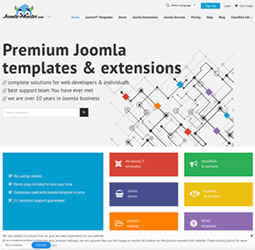A CMS is a Content Management System that separates content from layout and styling (presentation). The content is stored as text in some form of database, and scripting on the web server will respond to user requests for pages by combining the relevant content (in the form of HTML) with the Website Template that specifies the placement and formatting on the page.
There are many CMS's available and they all use a system of combining content with the instructions in a template. Templates often use scripting, both server-side and client-side, combined with hard coded html and CSS (style sheets). Shopping cart systems are also based on the same principle, and can have separate templating systems that allow the template to be changed.
The most popular web server operating system is Apache, followed by Microsoft IIS (Internet Information Services). Apache runs the Unix or Linux OS and utilises PHP as the CMS scripting language, and MySQL as the database that stores all the user content, plus instructions for presentation that the CMS will combine with the template.
Content management systems are designed to allow multiple users to create and edit content, and manage the overall structure and navigation. They can have a system of version control and history built in that allow changes to be rolled back.
Some of the most popular CMS's are shown below.
WordPress
 WordPress is a very popular, free and open source CMS that started life as a blogging system with articles, or posts, being displayed in date order. It was releases in 2003 and has since developed into a capable website content management system. It is suitable mainly for personal use on smaller websites, but does have the capability of being extended to manage larger websites. For larger business websites there are better, dedicated, options such as the ones below.
WordPress is a very popular, free and open source CMS that started life as a blogging system with articles, or posts, being displayed in date order. It was releases in 2003 and has since developed into a capable website content management system. It is suitable mainly for personal use on smaller websites, but does have the capability of being extended to manage larger websites. For larger business websites there are better, dedicated, options such as the ones below.
The WP system is well supported and has many plugins and templates available for free as well as paid for.
Joomla
 Joomla CMS started off in 2005 as a free, open source content management system after forking from Mambo and the formation of Open Source Matters. It runs on Apache Unix / Linux servers using the PHP / MySQL scripting and database software.
Joomla CMS started off in 2005 as a free, open source content management system after forking from Mambo and the formation of Open Source Matters. It runs on Apache Unix / Linux servers using the PHP / MySQL scripting and database software.
Joomla has a repository for numerous extensions from third party developers that are verified. Many extensions - components, modules & plugins - are available for free, as well as a large range of paid for extensions.
There are many templates available for free, and also many that are paid for either by purchasing individually or part of a subscription. Templates for Joomla often have a GUI (graphical user interface) that allows the user to edit the template settings such as fonts, layout, colour schemes, and functionality.
Drupal
 Drupal is also a free and open source content management system dating back to 2001. Although popular, with over a million websites being run with Drupal, it is seen as being not as user friendly as WordPress or Joomla, and more suitable for larger business, corporate or public sector websites where it's extensive features can manage multi user, complicated structures.
Drupal is also a free and open source content management system dating back to 2001. Although popular, with over a million websites being run with Drupal, it is seen as being not as user friendly as WordPress or Joomla, and more suitable for larger business, corporate or public sector websites where it's extensive features can manage multi user, complicated structures.
Umbraco
Umbraco, unlike the previous CMS, is a .NET based system designed to run on Windows servers (ASP - IIS) and is written in C# and is available under an open source MIT License.